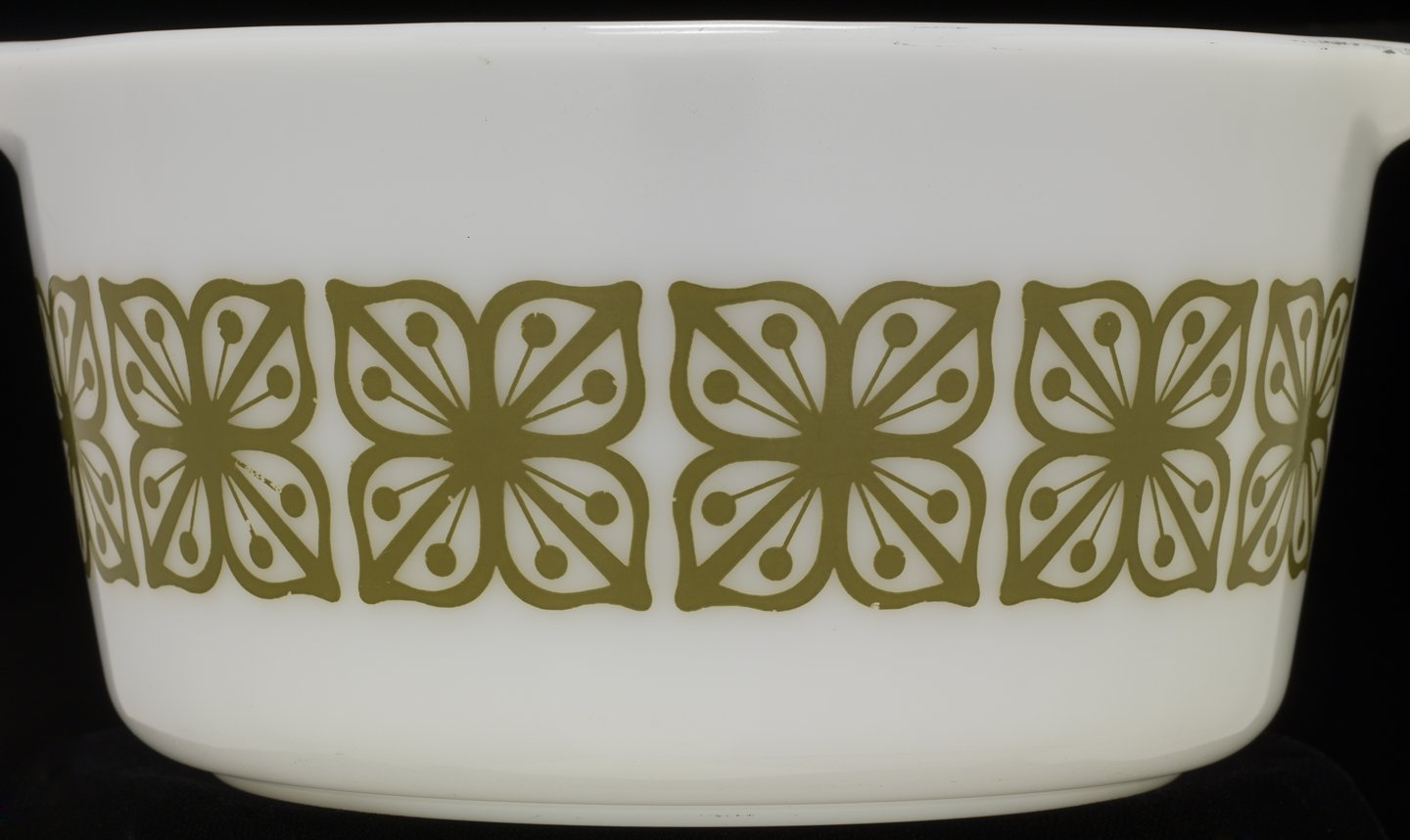Autumn Floral was available to the consumer market in 1964 to promote “…bright colors and designs to fit any décor.” With a golden yellow square floral design printed on a mustard yellow background, Autumn Floral was the precursor to the standard pattern Verdé released in 1967.
One of the larger promotional expansions, Autumn Floral was available on the 1-pint Round Casserole (471), the 1 ½ pint Round Casserole (472), the 1-quart Round Casserole (473), the 1 ½ quart Round Casserole (474) and the 2 ½ quart Round Casserole (475).
The smaller 471 and 472 casseroles were printed with one row of the square floral pattern while the larger 473, 474 and 475 casseroles were printed with two rows of the same pattern.
Corning Glass Works offered its first patterned opalware gift set in 1953 when the Heinz Baking Dish was sold in grocery stores. Widespread distribution of promotional patterns occurred after the overwhelming success of the 1956 release of seasonal “decorator casseroles.” Using existing Pyrex shapes, gift sets featured new patterns offered for a limited production time. They often came with mounters, cradles, or candle warmers and were advertised in the spring to appeal to Mother’s Day and summer wedding shoppers and in the fall to give the holiday gift-buyers something new. Corning continued to produce gift sets through 1983, creating nearly 135 different gift set patterns during that time. Corning intended these pieces to be sold for a limited time, and directed retailers to remove older, unsold promotions from the shelves.
Often, patterns used for these gift items were unnamed, or given names descriptive of the dish’s purpose, like “chip and dip set.” Collectors over the years have assigned names reflective of the specific pattern.
